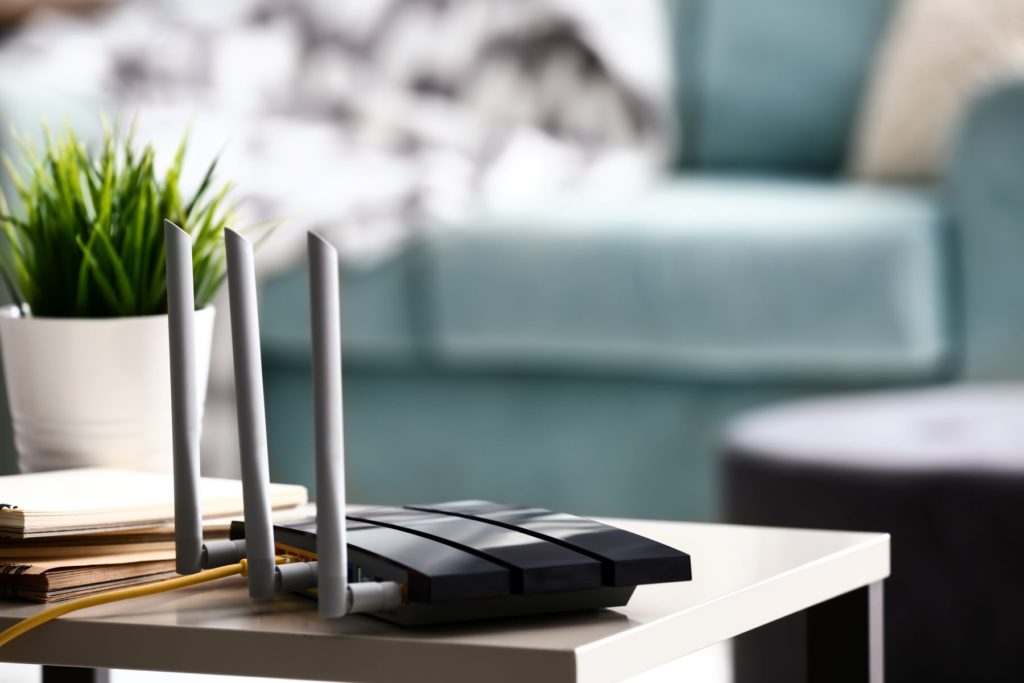The Types of Wi-Fi Antennas Explained
- ,
- , Latest News

Almost all of us use Wi-Fi on a daily basis but in order for it to work, Wi-Fi has to make use of antennas to be able to transmit a signal. Antennas convert radio frequency transmissions into alternating current (AC) power, or vice-versa, which is how Wi-Fi sources communicate with our paired devices.
There are different types of antenna and different formats that they are available in, so here we’ve covered everything you need to know about the various types of Wi-Fi antennas.
Types of Wi-Fi Antenna
There are three main types of Wi-Fi antenna – omni-directional antennas, semi-directional antennas, and directional antennas. Each of these types has a specific purpose and application, but all perform the same basic function – producing radio waves that transmit information.
Omni-Directional Antenna
Omni-directional antennas radiate EM waves at equal power in all directions within a uniform plane. These types of antenna are typically for indoor use in applications such as internet routers, as well as devices such as mobile phones, laptops, tablets and television sets.
These types of antenna are usually very small, unlike the antennas you would typically associate with old TV sets, and are usually dipole antennas which radiate radio frequency out in all directions so that it can reach all the devices in the building that require Wi-Fi. This type of antenna also allows you to move your devices from room to room without losing connection, provided they are still within range of the antenna’s signal.
Semi-Directional Antenna
Semi-directional antennas are used for communication across short to medium distances, both indoors and outdoors, and radiate their signals forward in a cone shape, similar to a torchlight.
These types of antennas are particularly useful in buildings with long corridors or otherwise elongated space, where an omnidirectional signal would struggle to reach all areas. These types of antennas can also be used to create a Wi-Fi connection between two buildings, such as in a campus or workplace where multiple buildings need to use the same network.
Directional Antenna
Directional antennas are used for long-distance, point-to-point communication. They provide a narrow, focused beam that reduces interference from other sources.
Directional Antennas may be combined to create sector antennas. These types of antenna are made up of directional antennas placed back-to-back to mimic the signal pattern of an omni-directional antenna.
These antennas can be placed up high and each of the directional antennas can then be tilted to aim where the coverage is most needed, providing a stronger signal than omni-directional antennas, especially for long-range coverage, such as with cell towers.
Formats of Wi-Fi Antennas
All the above types of antenna are designed to transmit a signal in a specific direction or directions, but these antennas also appear in different formats which make them best suited for their intended application.
- Small-sized, direct antennas have many applications and are easy to install
- Through-hole or through-bolt antennas are suitable for outdoor applications such as on street furniture.
- Wall mount and pole mount antennas for office and outdoor applications.
- Embedded antennas are compact in size and ideal for situations where discretion is desired.
- Magnetic antennas allow quick installation and are ideal for mobile communications and transportation use within the freight industry.
- Adhesive antennas are a versatile option that are low cost and easily fitted and are great for mobile or tracking applications.
If you’re looking for an antenna suitable for your application, you can view our range.
